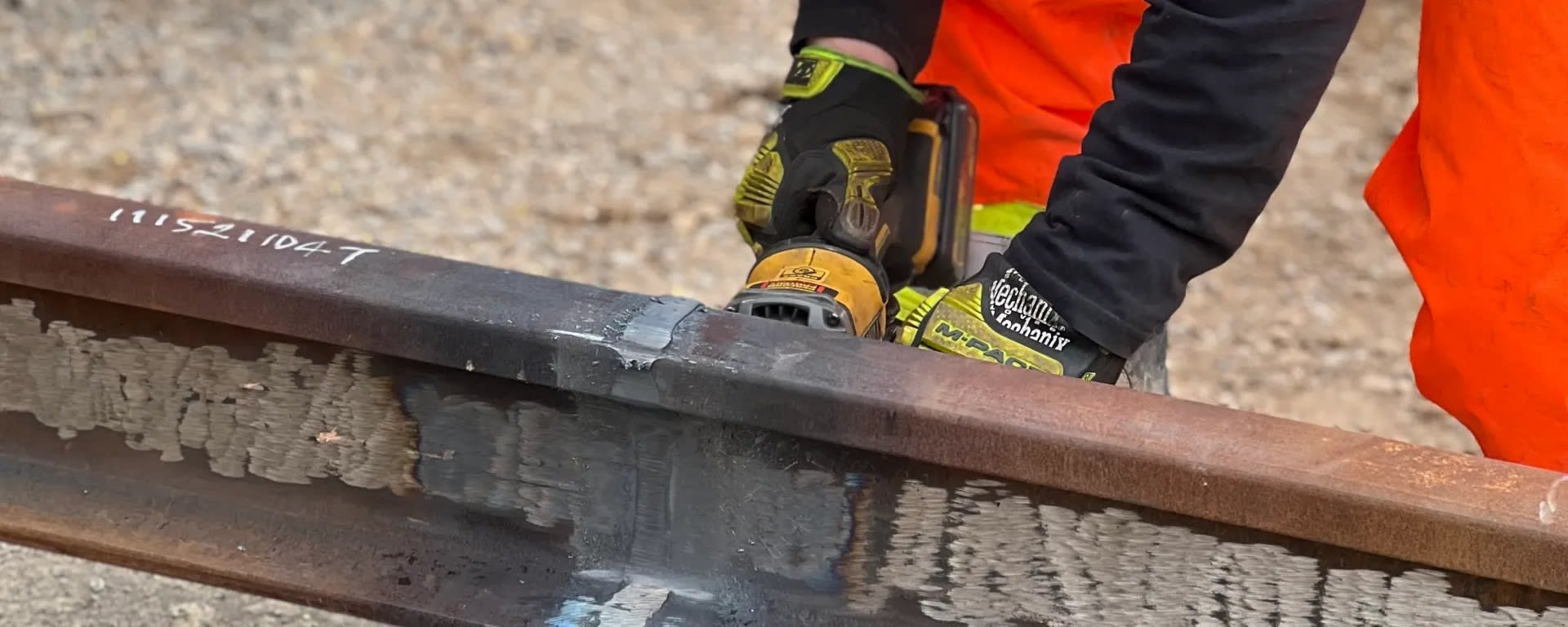The power behind laying tracks for the Hazel McCallion LRT
The Hazel McCallion LRT (also known as the Hurontario LRT), continues to come together.
May 4, 2022
A lot of energy goes into laying train tracks.
It’s not as simple as taking them off a truck and snapping them together like LEGO blocks.
The first sections of track were recently installed at the Hazel McCallion light rail transit (LRT) maintenance and storage facility – and it takes some specialized workers and equipment to make sure the job’s done right.
Crews are connecting pieces of track at the maintenance and storage facility, on the border of Brampton and Mississauga, using a technique called long-welded rail (LWR).
So far, 12 LWRs have been created inside the maintenance and storage buildings, the longest being 140 metres long.
Long-welded rail tends to be stronger and more durable than the conventional alternative. (Metrolinx image)
Different welds for different jobs
Two different types of welding are being used on the Hazel McCallion LRT project.
One is called aluminothermic welding, which is where molten steel is poured into a mould surrounding the gap between rail ends being joined. The other is known as flash-butt welding, which works by making small contact between the components using a high voltage current to melt the steel.
One of the first sections of track put down as part of the project. (Metrolinx image)
“Welding of rails is a major milestone on the project,” says Matheesha Megasooriya, Mobilinx trackworks engineering coordinator.
“We’re looking forward to carrying out the operation for the rest of the LRT route.”
Once the rails are welded together, each weld is certified using ultrasonic testing and magnetic particle testing.
Sometimes transit building is all about heavy machinery and engineering marvels – other times it’s the finer details. In this case, highly-trained professionals are making connections to bring the project together.
by Erika D’Urbano Communications senior advisor
